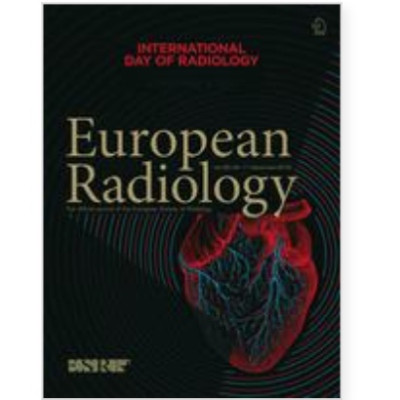Publication
Morphological MRI-based features provide pretreatment and post-surgery survival prediction in glioblastoma
J. Pérez-Beteta, D. Molina-García, A. Martínez-González, M. Amo, A. Henares-Molina, B. Luque, E. Arregui, M. Calvo, J.M.Borrás, J. Martino, C. Velasquez, B. Meléndez, A.R. de Lope, R. Moreno, J.A. Barcia, B. Asenjo, M. Benavides, I. Herruzo, P.C. Lara, R. Cabrera, D. Albillo, M. Navarro, L.A. Pérez-Romasanta, A. Revert, E. Arana, V.M. Pérez-García
European Radiology 29(4) 1968-1977 (2019)
MOLAB authors
Pérez García, Victor M.. Martínez González, Alicia. Molina García, David. Pérez Beteta, Julián. Henares Molina, Araceli. Albillo Labarra, José David. Arana Fernández de Moya, Estanislao. Asenjo Martínez, Beatriz. Luque Sánchez, Belén. Meléndez-Asensio, Bárbara. Pérez Romasanta, Luis. Herruzo Cabrera, Ismael.
Abstract
Objectives: We wished to determine whether tumor morphology descriptors obtained from pretreatment magnetic resonance images and clinical variables could predict survival for glioblastoma patients.
Methods: A cohort of 404 glioblastoma patients (311 discovery and 93 validation) was used in the study. Pretreatment volumetric postcontrast T1-weighted magnetic resonance images were segmented to obtain the relevant morphological measures. Kaplan-Meier, Cox proportional hazards, correlations and Harrell’s concordance indexes (c-indexes) were used for the statistical analysis.
Results: A linear prognostic model based on the outstanding variables (age, contrast-enhancing (CE) rim width and surface regularity) identified a group of patients with significantly better survival (P<0.001, HR=2.57) with high accuracy (discovery c-index=0.74; validation c-index=0.77). A similar model applied to totally resected patients was also able to predict survival (P<0.001, HR=3.43) with high predictive value (discovery c-index=0.81; validation c-index=0.92). Biopsied patients with better survival were well identified (P<0.001, HR=7.25) by a model including age and CE volume (c-index=0.87).
Conclusions: Simple linear models based on small sets of meaningful MRI-based pretreatment morphological features and age predicted survival of glioblastoma patients to a high degree of accuracy. Our approach substantially outperformed more complex approaches including some based on machine-learning methods.















